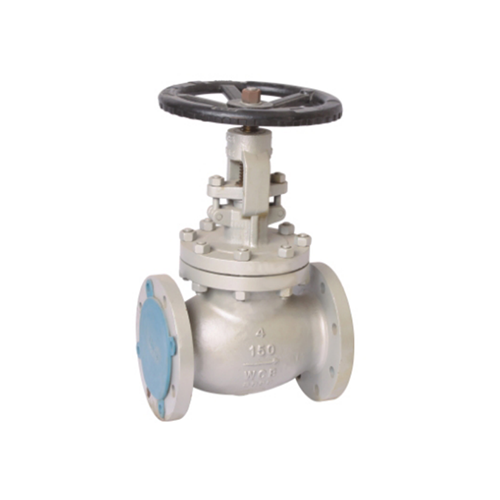
Best Practices for Ball Valve Storage and Packaging
Introduction
Ball valves are critical components in various industries, including oil and gas, water treatment, chemical processing, and manufacturing. Proper storage and packaging are essential to ensure their longevity, performance, and reliability. Improper handling can lead to corrosion, mechanical damage, or contamination, which may result in operational failures.
This guide outlines best practices for storing and packaging ball valves to maintain their integrity before installation and use.
---
1. Pre-Storage Preparation
Before storing ball valves, proper preparation is necessary to prevent damage and contamination.
1.1 Cleaning and Inspection
- Remove Contaminants: Ensure valves are free from dirt, grease, and residual process fluids.
- Inspect for Damage: Check for scratches, dents, or signs of corrosion.
- Verify Seals and Gaskets: Ensure all sealing components are intact and undamaged.
1.2 Lubrication and Protection
- Apply Corrosion Inhibitors: Coat metal surfaces with anti-corrosion oil or grease.
- Protect Sealing Surfaces: Use protective caps or plugs to prevent debris ingress.
1.3 Documentation and Labeling
- Tag Valves Properly: Include specifications (size, pressure rating, material).
- Maintain Records: Track storage conditions and inspection dates.
---
2. Packaging Best Practices
Proper packaging prevents physical damage and environmental exposure.
2.1 Protective Wrapping
- Use VCI (Vapor Corrosion Inhibitor) Paper: Prevents rust during transit and storage.
- Seal with Plastic Bags: Moisture-proof packaging is essential for long-term storage.
2.2 Cushioning and Support
- Foam or Bubble Wrap: Prevents impact damage.
- Wooden or Cardboard Supports: Maintain valve alignment and prevent deformation.
2.3 Secure Packaging for Transport
- Use Sturdy Crates or Pallets: Prevents shifting during handling.
- Avoid Stacking Heavy Items: Excessive weight can deform valve bodies.
---
3. Storage Conditions
The storage environment significantly impacts valve longevity.
3.1 Temperature and Humidity Control
- Store in Dry, Climate-Controlled Areas: Ideal humidity below 60%.
- Avoid Extreme Temperatures: Prevent material degradation (e.g., elastomer seals).
3.2 Shelving and Positioning
- Store Horizontally or Vertically?
- Small valves: Can be stored on shelves.
- Large valves: Store horizontally to prevent seat deformation.
- Avoid Direct Floor Contact: Use pallets to prevent moisture absorption.
3.3 Protection from Contaminants
- Dust and Debris Prevention: Cover valves with tarps or plastic sheets.
- Chemical Exposure: Keep away from corrosive substances.
---
4. Handling and Transportation Precautions
Improper handling can cause mechanical damage.
4.1 Lifting and Moving Valves
- Use Proper Lifting Equipment: Avoid dragging or dropping.
- Larger Valves Require Cranes or Forklifts: Follow weight limits.
4.2 Avoiding Impact Damage
- No Rough Handling: Dropping can crack valve bodies.
- Secure During Transit: Use straps to prevent movement.
---
5. Long-Term Storage Considerations
For valves stored for extended periods (over 6 months), additional precautions are necessary.
5.1 Regular Inspections
- Check Every 3-6 Months: Look for corrosion, seal degradation, or packaging wear.
- Reapply Corrosion Inhibitors: If necessary.
5.2 Rotating Stock (FIFO Method)
- First-In, First-Out (FIFO): Ensures older stock is used first.
5.3 Revalidation Before Use
- Pressure Testing: Verify integrity before installation.
- Replace Damaged Seals: If stored for long durations.
---
6. Special Considerations for Different Valve Materials
Material-specific storage requirements must be followed.
6.1 Stainless Steel Valves
- Avoid Chloride Exposure: Prevents stress corrosion cracking.
6.2 Brass and Bronze Valves
- Prevent Dezincification: Store in low-humidity environments.
6.3 Plastic Valves (PVC, CPVC, PP)
- UV Protection: Avoid direct sunlight to prevent brittleness.
6.4 Cryogenic Valves
- Special Seals Required: Ensure compatibility with extreme temperatures.
---
7. Common Mistakes to Avoid
- Leaving Valves Unprotected: Exposed valves corrode faster.
- Improper Stacking: Can cause structural damage.
- Ignoring Manufacturer Guidelines: Always follow recommended storage conditions.
---
Conclusion
Proper storage and packaging of ball valves are crucial for maintaining their performance and extending service life. By following these best practices—cleaning, protective packaging, controlled storage conditions, and careful handling—operators can prevent premature failures and costly replacements.
Implementing a structured storage plan ensures that ball valves remain in optimal condition, ready for installation and reliable operation when needed.
---
This guide provides a comprehensive approach to ball valve storage and packaging, ensuring durability and operational efficiency. Let me know if you need any modifications or additional details.
Ce site Web utilise des cookies pour vous garantir la meilleure expérience sur notre site Web.
Commentaire
(0)